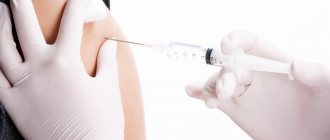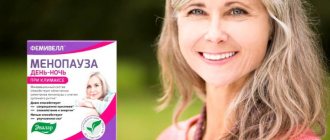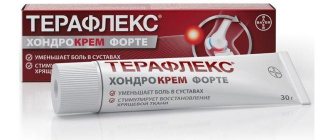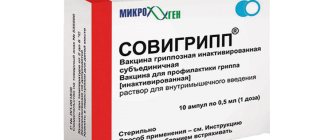BETA-LACTAM ANTIBIOTICS
β-lactam antibiotics (β-lactams), which are united by the presence of a β-lactam ring in their structure, include penicillins, cephalosporins, carbapenems
and
monobactams
, which have a bactericidal effect. The similarity of the chemical structure determines the same mechanism of action of all β-lactams (impaired bacterial cell wall synthesis), as well as cross-allergy to them in some patients.
Penicillins, cephalosporins and monobactams are sensitive to the hydrolyzing action of special enzymes - β-lactamases, produced by a number of bacteria. Carbapenems are characterized by significantly higher resistance to β-lactamases.
Given their high clinical efficacy and low toxicity, β-lactam antibiotics form the basis of antimicrobial chemotherapy at the present stage, occupying a leading place in the treatment of most infections.
Penicillins are the first antimicrobial drugs developed on the basis of biologically active substances produced by microorganisms. The ancestor of all penicillins, benzylpenicillin, was obtained in the early 40s of the 20th century. Currently, the group of penicillins includes more than ten antibiotics, which, depending on the sources of production, structural features and antimicrobial activity, are divided into several subgroups (Table 1).
Table 1. Classification of penicillins
| Natural | Benzylpenicillin (penicillin) Benzylpenicillin procaine Benzathine benzylpenicillin Phenoxymethylpenicillin Benzathine phenoxymethylpenicillin |
| Semi-synthetic | |
| Antistaphylococcal | Oxacillin |
Spread Spectrum
| Ampicillin Amoxicillin |
Antipseudomonas
| Carbenicillin Ticarcillin Azlocillin Piperacillin |
| Inhibitor-protected | Amoxicillin/clavulanate Ampicillin/sulbactam Ticarcillin/clavulanate Piperacillin/tazobactam |
| Combined | Ampicillin/oxacillin |
General properties:
- Bactericidal action.
- Low toxicity.
- Excretion is mainly through the kidneys.
- Wide range of dosages.
- Cross-allergy between all penicillins and some cephalosporins and carbapenems.
References
- Medical Immunology. Federal clinical guidelines / ed. R.M. Khaitova, N.I. Ilyina. - M.: FarmarusPrint Media, 2014. - T. 13. - No. 4-5. - 2011. - T. 13, No. 4-5. — 126 s.
- Clinical recommendations “Allergology and clinical immunology” / ed. R.M. Khaitova, N.I. Ilyina. - M.: GEOTAR-Media, 2022. - 336 p.
- Goldberg, A., Confino-Cohen, R. Skin testing and oral penicillin challenge in patients with a history of remote penicillin allergy. AnnAllergyAsthmaimmunol, 2008. - Vol. 100. - P. 37-43.
NATURAL PENICILLINS
Natural penicillins include essentially only benzylpenicillin. However, based on the spectrum of activity, prolonged (benzylpenicillin procaine, benzathine benzylpenicillin) and oral (phenoxymethylpenicillin, benzathine phenoxymethylpenicillin) derivatives can also be classified in this group. All of them are destroyed by β-lactamases, so they cannot be used to treat staphylococcal infections, since in most cases staphylococci produce β-lactamases.
BENZYLPENICILLIN (PENICILLIN)
It is the first natural antibiotic. Despite the fact that many other antibiotics have been introduced in the almost 60 years since its use began, penicillin continues to be one of the important drugs.
Advantages
- Powerful bactericidal effect against a number of clinically significant pathogens (streptococci, meningococci, etc.).
- Low toxicity.
- Low cost.
Flaws
- Acquired resistance of staphylococci, pneumococci, gonococci, bacteroides.
- Highly allergenic, cross-reactive with all penicillins.
Activity spectrum
| Gram(+) cocci: | streptococci (especially GABHS), including pneumococci; enterococci (resistant to low concentrations); staphylococci, however, most strains ( S.aureus, S.epidermidis ) are resistant because they produce β-lactamases. |
| Gram(-) cocci: | meningococci; gonococci (resistant in most cases). |
| Gram(+) sticks: | listeria, pathogens of diphtheria, anthrax. |
| Spirochetes: | Treponema pallidum, Leptospira, Borrelia. |
| Anaerobes: | spore-forming - clostridia; non-spore-forming - peptococcus, peptostreptococcus, fusobacteria (the main representative of non-spore-forming intestinal anaerobes B.fragilis is resistant); actinomycetes. |
Pharmacokinetics
It is destroyed in the gastrointestinal tract, so it is ineffective when taken orally. It is well absorbed when administered intramuscularly, peak concentration in the blood is reached after 30-60 minutes. Creates high concentrations in many tissues and body fluids. It penetrates poorly through the BBB and GOB into the prostate gland. Excreted by the kidneys. T1/2 - 0.5 hours.
Adverse reactions
- Allergic reactions: rash, Quincke's edema, fever, eosinophilia. The most dangerous is anaphylactic shock, which has a mortality rate of up to 10%. Prevention measures
Careful history taking, use of freshly prepared penicillin solutions, observation of the patient for 30 minutes after the first administration of penicillin, detection of hypersensitivity by skin testing (see section VI). - Locally irritating effect, especially with intramuscular injection of potassium salt.
- Neurotoxicity: convulsions (more often in children), when using high doses of penicillin, especially in renal failure, with endolumbar administration of more than 10 thousand units of penicillin sodium salt or potassium salt.
- Electrolyte imbalance - hyperkalemia when using high doses of potassium salt in patients with renal failure (1 million units contains 1.7 mmol of potassium). In patients with heart failure, administration of large doses of sodium salt may increase edema (1 million units contains 2.0 mmol of sodium).
Drug interactions
Synergistic when combined with aminoglycosides, but they should not be mixed in the same syringe
, since inactivation of aminoglycosides is noted. Combinations with other antibiotics are used, for example, with macrolides for pneumonia, with chloramphenicol for meningitis.
Combination with sulfonamides should be avoided.
Indications
- Infections caused by GABHS: tonsillopharyngitis, erysipelas, scarlet fever, acute rheumatic fever.
- Community-acquired pneumococcal pneumonia.
- Meningitis in children over 2 years of age and in adults.
- Bacterial endocarditis - always in combination with gentamicin or streptomycin.
- Syphilis.
- Leptospirosis.
- Borreliosis (Lyme disease).
- anthrax
- Anaerobic infections: clostridial - gas gangrene, tetanus; non-clostridial (caused by non-spore-forming anaerobes) when the process is localized above the diaphragm.
- Actinomycosis.
Dosage
Adults
For infections of moderate severity and high sensitivity of microflora - 2-4 million units/day in 4 intramuscular injections. For tonsillopharyngitis - 500 thousand units every 8-12 hours for 10 days. For severe infections - 6-12 million units/day, intramuscularly or intravenously every 4-6 hours.
When the infection is localized in a place difficult to reach for penicillin (meningitis, endocarditis) - 18-24 million units/day, in 6 injections intravenously and/or intramuscularly.
Children
Intravenously or intramuscularly - 50-100 thousand units/kg/day in 4 administrations, for tonsillopharyngitis, 500 thousand units every 12 hours for 10 days. For meningitis - 300-400 thousand units/kg/day in 6 injections intravenously and/or intramuscularly.
Release forms
Bottles of 125, 250, 500 thousand and 1 million units of powder for the preparation of a solution for injection in the form of sodium or potassium salt.
PHENOXYMETHYLPENICILLIN
Megacillin
The spectrum of activity does not differ from penicillin, but is more stable when taken orally. Absorbed from the gastrointestinal tract by 60%, and food has little effect on bioavailability. High concentrations of the drug in the blood are not created; taking 0.5 g of phenoxymethylpenicillin orally approximately corresponds to the administration of 300 thousand units of penicillin. T1/2 - about 1 hour.
Adverse reactions
- Allergic reactions (see Benzylpenicillin).
- Dyspeptic and dyspeptic disorders.
Indications
- Streptococcal (GABHS) infections of mild to moderate severity:
- tonsillopharyngitis;
- skin and soft tissue infections.
Dosage
Adults
0.25-0.5 g every 6 hours. For streptococcal tonsillopharyngitis, 0.25 g every 8 hours or 0.5 g every 12 hours, always for 10 days. For the prevention of rheumatic fever, 0.25 g every 12 hours. Take orally 1 hour before meals.
Children
Orally - 30-50 mg/kg/day in 3-4 divided doses. For streptococcal tonsillopharyngitis, 0.25 g every 12 hours, always for 10 days.
Release forms
Tablets of 0.1 g, 0.25 g, 0.5 g and 1.0 g; syrup; granules for preparing a suspension.
BENZATINE PHENOXYMETHYL PENICILLIN
Ospen
It is a derivative of phenoxymethylpenicillin. Compared to it, it is more stable in the gastrointestinal tract and is absorbed faster. Bioavailability is independent of food.
Indications
- Streptococcal (GABHS) infections of mild to moderate severity:
- tonsillopharyngitis;
- skin and soft tissue infections.
Dosage
Adults
Orally - 3 million units/day in 3-4 divided doses, regardless of food.
Children under 10 years old
Orally - 50-100 thousand units/kg/day in 3-4 doses.
Children over 10 years old
Orally - 3 million units/day in 3-4 doses.
Release forms
Tablets of 250 thousand and 500 thousand units; suspension 750 thousand units/5 ml.
PROLONGED-LONG DRUGS PENICILLIN
Long-acting penicillin preparations (depot penicillins) include benzylpenicillin procaine (novocaine salt of benzylpenicillin), which has an average duration of action (about 24 hours), benzathine benzylpenicillin, which has a long-term effect (up to 3-4 weeks), as well as their combination preparations.
These drugs are slowly absorbed when administered intramuscularly and do not create high concentrations in the blood.
Adverse reactions
- Allergic reactions (see Benzylpenicillin)
- Soreness, infiltrates at the site of intramuscular injection.
- Hoigne's syndrome is ischemia and gangrene of the extremities due to accidental injection into an artery.
- Nicholau syndrome is an embolism of the blood vessels of the lungs and brain when injected into a vein.
Prevention of vascular complications:
strict adherence to the injection technique - intramuscularly into the upper outer quadrant of the buttock using a wide needle, with the patient in a horizontal position. Before insertion, it is necessary to pull the syringe plunger towards you to make sure that the needle is not in the vessel.
Indications
- Infections caused by microorganisms highly sensitive to penicillin:
- streptococcal (GABHS) tonsillopharyngitis;
- syphilis.
BENZYLPENICILLIN PROCAINE
When administered intramuscularly, the therapeutic concentration in the blood is maintained for 12-24 hours, but the concentrations are lower than when an equivalent dose of benzylpenicillin sodium or potassium salt is administered. T1/2 - 24 hours.
Used for mild pneumococcal pneumonia, streptococcal tonsillopharyngitis (an alternative to benzylpenicillin if frequent injections are not possible). It has a local anesthetic effect and is contraindicated if you are allergic to procaine (Novocaine).
Dosage
Adults
Intramuscularly - 600 thousand-1.2 million units/day in 1-2 injections. For the prevention of anthrax - 1.2 million units every 12 hours for 2 months.
Children
Intramuscularly - 50-100 thousand units/kg/day in 1-2 injections. For the prevention of anthrax - 25 thousand units/kg every 12 hours for 2 months.
Release forms
Bottles of 300 thousand, 600 thousand and 1.2 million units of powder for the preparation of solution for injection.
BENZATINE BENZYLPENICILLIN
Bicillin-1, Extensillin, Retarpen
It acts longer than benzylpenicillin procaine, up to 3-4 weeks. After intramuscular administration, peak concentrations are observed after 24 hours in children and after 48 hours in adults. T1/2 - several days.
In recent years, pharmacokinetic studies have been carried out on domestic drugs containing benzathine benzylpenicillin (bicillin-3, bicillin-5). It has been shown that when used, the therapeutic concentration in the blood serum is maintained for no more than 14 days, which requires their more frequent administration than, for example, extensillin.
Dosage
Adults
1.2-2.4 million units once; for syphilis - 2.4 million units/day every 5-7 days (2-3 injections); for the prevention of rheumatic fever and recurrent erysipelas - 1.2-2.4 million units once a month. The drug is administered strictly intramuscularly.
Children
Intramuscularly - 1.2 million units once; for the prevention of rheumatic fever - 600 thousand-1 million units once a month.
Release forms
Bottles of 300 thousand, 600 thousand, 1.2 million and 2.4 million units of powder for the preparation of solution for injection.
Bicillin-3
Ingredients: benzylpenicillin potassium salt, benzylpenicillin procaine and benzathine benzylpenicillin in equal quantities. Has no advantages over benzathine benzylpenicillin.
Dosage
Adults and children
Intramuscularly - 1.2 million units once.
Release forms
Bottles of 300 thousand, 600 thousand, 900 thousand and 1.2 million units of powder for the preparation of solution for injection.
Bicillin-5
Ingredients: 1 part benzylpenicillin procaine, 4 parts benzathine benzylpenicillin. Has no advantages over benzathine benzylpenicillin.
Dosage
Sam Ross's Recipe: Proper Ginger
What is unique about the Penicillin cocktail? For the first time in bartending history, its composition includes single malt whiskey. However, this is not the only nuance and secret (however, it is not kept secret). Ross believes that the key to proper taste is expertly prepared ginger juice. It is pressed in a centrifuge or kitchen juicer and flavored with a small amount of sugar. There are only two cooking conditions. Firstly, you cannot replace sand with syrup, otherwise the aroma of the root will disappear very quickly. Secondly, it is strictly forbidden to boil ginger in honey or syrup, as some bartenders do. With this approach, not only the aroma of the fresh spice is lost, but also its beneficial properties. And the Penicillin cocktail itself turns into an ordinary, passable drink. But properly prepared juice can be used all evening without compromising the cocktail.
Indications for use
Antibiotics of the penicillin group, the names of which will be prompted directly by the attending physician, are used to treat diseases caused by microorganisms sensitive to penicillin:
- pneumonia (lobar and focal);
- pleural empyema;
- septic endocarditis in acute and subacute forms;
- sepsis;
- pyemia;
- septicemia;
- osteomyelitis in acute and chronic form;
- meningitis;
- infectious diseases of the biliary and urinary tract;
- purulent infectious diseases of the skin, mucous membranes, soft tissues;
- angina;
- scarlet fever;
- erysipelas;
- anthrax;
- actinomycosis;
- diphtheria;
- gynecological purulent-inflammatory diseases;
- ENT diseases;
- eye diseases;
- gonorrhea, syphilis , blenorrhea.
Cabbage
Red cabbage has powerful anti-inflammatory effects and anti-cancer properties. In addition, it has antibacterial properties. This product is surprisingly effective in fighting bacteria that even medications cannot control. Cabbage juice is also an excellent remedy for ulcers because it is high in lactic acid, which regulates bacteria levels and prevents symptoms from worsening. Cabbage leaves have been used for centuries to treat mastitis, an inflammatory process in the mammary gland. This is a truly effective remedy, although it seems extremely simple.
Cucumbers without a greenhouse. Planting seedlings in cups
Scientists have revealed the secret of the brightness of the world's oldest Altai carpet from the Hermitage
Fashionable haircuts for older men: 10 youthful ideas
Origin story
The bartender of the legendary Manhattan establishment Milk & Honey, Sam Ross, gave an extensive interview during a Moscow tour in 2011. When asked by a journalist what drink is the hallmark of the bar, Sam answered without hesitation: “Penicillin.” What is his secret? According to Ross, in harmony of sour and sweet, whiskey and ice. This is exactly the kind of long drink the establishment needed in 2005 to freshen up the menu. Over time, it fell in love with the public and moved from the category of cocktail “know-how” to traditional bar drinks.
Compound
The composition of drugs that belong to penicillin group of antibiotics depends on what kind of medicine we are talking about.
Currently, four groups are used:
- natural penicillins;
- semisynthetic penicillins;
- aminopenicillins, which have an extended spectrum of action;
- penicillins, which have a wide antibacterial spectrum of influence.
Rules for combining ingredients
Sam Ross suggests using Laphroaig whiskey as alcohol for the cocktail, which perfectly balances and harmonizes the aromas of ginger and honey. However, it is also possible to use another variety that is as “smoky” as possible.
The bartender pays special attention to the order in which the cocktail is assembled. In his opinion, first you need to add citrus components, then sweet ones, then alcoholic ones. Ice is thrown in last, as it immediately begins to melt, reducing the taste of the drink.
And finally, the original ratio of ingredients:
- 60 ml blended whiskey from Scotland.
- 22.5 ml (I think it’s not worth maintaining accuracy down to tenths of a milliliter) of lemon juice, just squeezed.
- 12 ml honey syrup.
- The same amount of ginger juice.
- 7.5 ml (roughly speaking - a dessert spoon) of Laphroaig whiskey.
Whip everything except the last component, strain into a glass with ice, pour No. 5 from the list on top, garnish with ginger (preferably candied).
Analogs
Level 4 ATC code matches:
Hiconcil
Ampioks
Ampicillin Trihydrate
Ampicillin
Ospamox
Amoxicar
Flemoxin Solutab
Amoxicillin
Amosin
Amoxil
Ecoball
There are a number of penicillin drugs; the most optimal antibiotic is determined by the doctor individually.
Side effects
During use, the patient must understand what penicillin is and what side effects it can cause. During treatment, allergy symptoms sometimes appear. As a rule, such manifestations are associated with sensitization of the body due to earlier use of these drugs. Allergies can also When using the medicine for the first time, allergies are observed less frequently. There is a possibility of sensitization of the fetus during pregnancy if a woman takes penicillin.
The following side effects may also develop during the course of treatment:
- Digestive system: nausea, diarrhea , vomiting.
- Central nervous system: neurotoxic reactions, signs of meningism, coma , convulsions .
- Allergies: urticaria , fever, rash on mucous membranes and skin, eosinophilia, edema . Cases of anaphylactic shock and death have been recorded. Adrenaline should be immediately administered intravenously.
- Manifestations associated with chemotherapeutic effects: oral candidiasis
Butter
Butter is sometimes criticized, then again it is considered healthy. It is regularly recommended to switch to margarine, but then it turns out that the latter is even more dangerous. In a word, doctors do not have a consensus on this matter. Butter actually contains a lot of nutrients, for example, it contains a component that protects against cancer, however, many manufacturers use raw materials that contain antibiotics. As mentioned earlier, cow's milk is quite dangerous. Choose the highest quality butter possible to prevent problems.
Contraindications
Tablets and injections are not used in the following cases:
- with high sensitivity to this antibiotic;
- for urticaria , hay fever , bronchial asthma and other allergic manifestations ;
- when patients exhibit high sensitivity to sulfonamides, antibiotics, as well as other drugs.
Mushrooms
You may find it strange to use mushrooms to fight bacteria. However, mushrooms do have powerful antimicrobial properties. Many antibiotics like penicillin, tetracycline and streptomycin are made from fungi and molds. Studies have shown that eating mushrooms can strengthen the body's defenses. But remember, not all mushrooms are created equal. For example, shiitake mushrooms are useful - they can fight cancer, destroy various bacteria and viruses, and also help regulate cholesterol levels. Reishi mushrooms are also beneficial because they have anti-inflammatory effects.
special instructions
Before using penicillin, it is important to conduct tests and determine sensitivity to the antibiotic.
Prescribe the medicine with caution to people who have impaired renal function, as well as patients with acute heart failure , people who have a tendency to allergic manifestations or severe sensitivity to cephalosporins .
If 3-5 days after the start of treatment there is no improvement in the patient’s condition, it is important to consult a doctor who will prescribe other antibiotics or combination treatment.
Since in the process of taking antibiotics there is a high probability of fungal superinfection , it is important to take antifungal agents during treatment. It is also important to consider that when using subtherapeutic doses of the drug or with an incomplete course of therapy, the emergence of resistant strains of pathogens is possible.
When taking the drug orally, you should take it with plenty of liquid. It is important to strictly follow the instructions on how to dilute the product.
During treatment with penicillins, it is necessary to strictly follow the prescribed treatment regimen and not skip doses. If a dose is missed, the dose should be taken as soon as possible. You cannot interrupt the course of treatment.
Since expired medicine may be toxic, it should not be taken.




